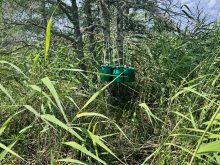As part of its agriculture policy, the federal government seems to assume that Canadian farm families should pay most of their bills with money earned off the farm, says the president of the Canadian Federation of Agriculture.
“It concerns me that we will become accustomed to the fact that off-farm income is part of our agricultural policy,” Manitoba farmer Bob Friesen said March 8. “That is unacceptable.”
He said no other significant Canadian economic sector with billions of dollars invested is expected to pay the bills by working a second job.
Read Also

Research looks to control flea beetles with RNAi
A Vancouver agri-tech company wants to give canola growers another weapon in the never-ending battle against flea beetles.
“Some people choose to work off-farm and some spouses want to, but that should not be an assumed requirement for farmers,” said Friesen. “For the majority of farm families, it should be possible to make a living from the farm.”
Figures published last week by Statistics Canada indicate that is not the case.
Most farm families continue to draw the bulk of their incomes from jobs and investments off the farm, according to federal government figures released March 5. And the dependence on off-farm income is growing.
Statistics Canada reported that in 1996, $69 of every $100 earned by farm families came from sources other than sale of farm produce. It was the highest percentage in years.
Only dairy farmers and Ontario tobacco producers consistently earned more from the farm than away from the farm.
According to Statistics Canada, average farm family incomes increased slightly in 1996 to $56,788.
It was only because off-farm income from employment, pensions and investments increased 2.4 percent to $39,131 that year. Income from sales of farm produce actually decreased, despite the fact that hog operations that year recorded an average 25 percent increase in farm income.
When the 1998 income figures are published in two years, the hog sector will drag the average farm income figures down because of last year’s price disaster.
In 1996, prairie farmers were close to the national average in their dependence on off-farm income. In Alberta, it was 70 percent, in Saskatchewan, 65 percent and in Manitoba, 66 percent.
The most prosperous farmers were Ontario’s tobacco producers, mainly because the average $51,000 earned from sales of their product was 61 percent of their total $83,300 income – almost double the national average.
Typically, because of its labor-intensive nature, dairy farmers earned the least portion of their income off the farm.
Cattle producers were among the highest off-farm income earners, across the Prairies as well as in Ontario where herds typically are smaller.
In future years, off-farm income for many farmers could grow because withdrawals from the Net Income Stabilization Account will be considered “other income” according to Statistics Canada analyst Lina Di PiŽtro.
Average off-farm income ranged from a low of $30,060 in Quebec to a high of $51,359 in British Columbia.
















